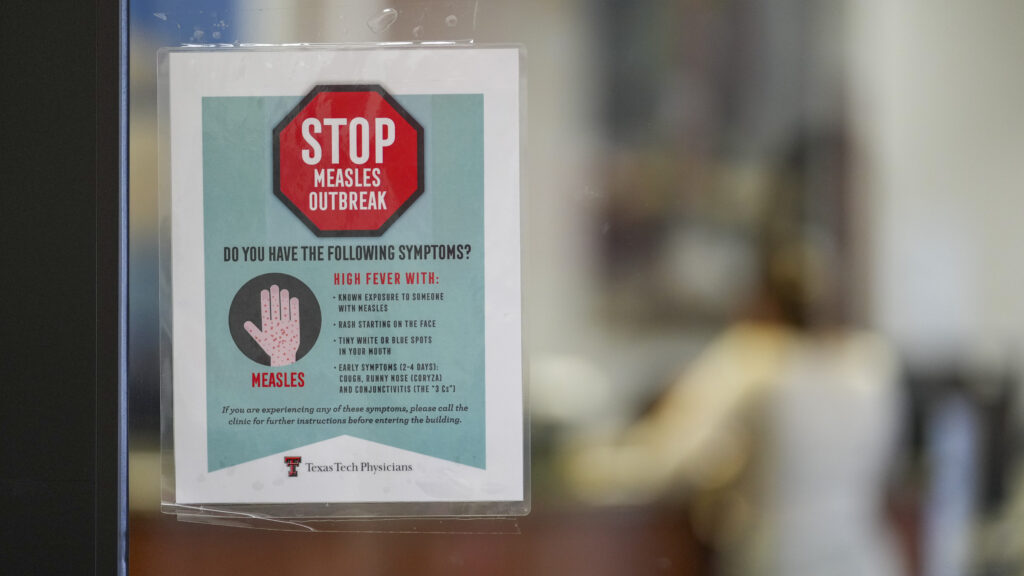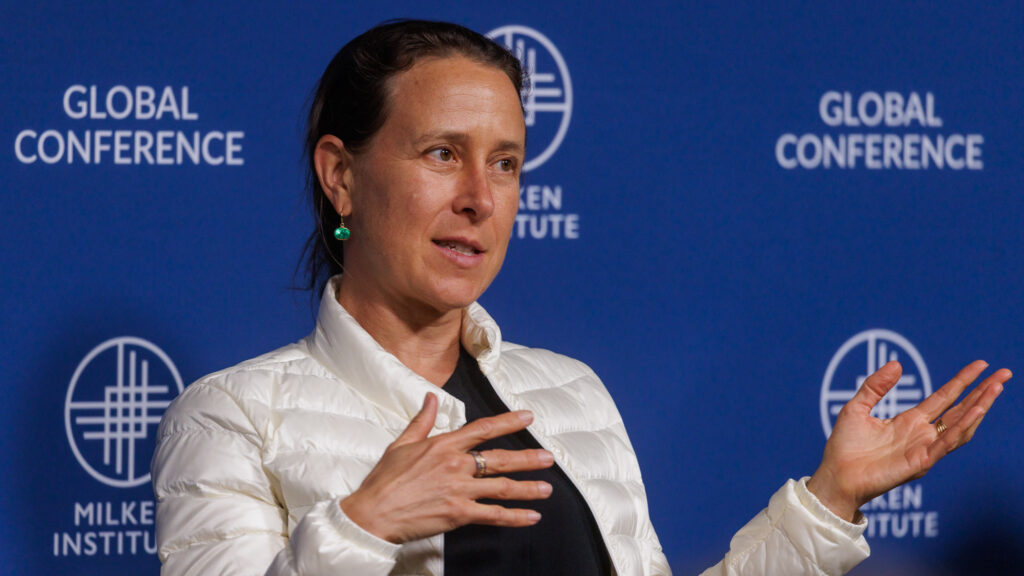A new federalista report on alcohol’s health effects has found even moderate drinking — within the bounds of U.S. nutrition guidance — could carry health risks, including injuries, liver disease and cancer.
The risk of those potential harms, and of dying from alcohol-related causes, increases the more a person consumes, according to the study by the Interagency Coordinating Committee for the Prevention of Underage Drinking.
The findings come just 11 days after U.S. Surgeon General Vivek Murthy issued an advisory on the links between alcohol and cancer and called for stronger warning labels on drinks. Another review, published last month by the National Academies of Sciences, Engineering, and Medicine, linked moderate drinking to lower all-cause mortality but also to an increased risk of breast cancer. The ICCPUD report points to elevated cancer risks and says, “at no age was there a significant net benefit of alcohol consumption on all-cause mortality.”
Both the NASEM report and today’s release — which is led by the Substance Abuse and Mental Health Services Administration — are set to inform the 2025 Dietary Guidelines for Americans. Their at-times contradictory results on various fronts will add fuel to the existing debate about alcohol research and just how much drink should be considered “safe” by health authorities.
While some public health advocates celebrated the new report, the alcohol industry came out against it on Tuesday, saying it should not be factored into dietary guidelines. A public comment period on the two reports will begin Wednesday and end on Feb. 14.
If confirmed as health secretary, Robert F. Kennedy Jr. will have the power to shape the guidelines against the foods he often criticizes, including ultra-processed snacks, sugary drinks and seed oils. He is in long-term recovery from alcohol and drugs, but hasn’t taken a clear stance on alcohol policy.
The 80-page report from the ICCPUD focused on deaths and reduced life expectancy from alcohol-related conditions. The process included a technical committee and a scientific review panel who, over many months, analyzed 56 systematic reviews on various health risks associated with moderate drinking, defined as two drinks per day for men or one per day for women. The results are for a general population, and aren’t meant to be applied to individuals, since many factors can shape a given person’s risk of disease and death.
“Alcohol would have a greater impact on the health of people who smoke, have poor diets, engage in low physical activity, are obese, have hepatitis infection, or have a family history of specific diseases than it would other individuals,” the report says.
To arrive at their findings, the researchers created models for alcohol-driven deaths at different levels of consumption. They found that in the U.S., the risk of dying from alcohol use “begins at low levels of average use,” and risk increases with higher alcohol use. Men and women have similar risks of health harms from drinking, the researchers note: Both have “a 1 in 1,000 risk of dying from alcohol use if they consume more than 7 drinks per week.” This risk increases to 1 in 100 if they consume more than 8.5 standard drinks per week.
Seven drinks per week — one per day — is within what the dietary guidelines define as “moderate drinking” for women, and below moderate drinking thresholds for men, which include up to 15 drinks per week. Even at two drinks per day, there were 39 alcohol-attributable male deaths per 1,000 people, the study found. (By comparison, “acceptable” risk outlined in environmental hazard laws is 1 in a million lifetime deaths from involuntary risk, the authors note.)
When estimating all-cause mortality, the researchers assessed the risks from conditions that are caused by alcohol, instead of also including deaths without any direct link to alcohol. This method was meant to reduce the risk of unknown variables being to blame, and to improve the specificity of the findings, they wrote in the report. “Only these direct risks are preventable.”
The study did not differentiate between different types of alcohol, since most experts believe it is the amount of pure ethanol that matters more than the choice of beverage. The standard drink in the U.S. has about 14 grams of pure alcohol in it, equal to a 12-oz. bottle of 5% ABV beer or a five-ounce glass of 12% ABV wine, or 1.5 ounces of 40% ABV liquor. Many mixed drinks contain more than one standard drink per serving.
As in the NASEM report, the ICCPUD study had mixed results in some areas. It linked one drink per day with an increased risk of injuries, liver cirrhosis, esophageal cancer and verbal cancer, but a lower risk of stroke. The authors note that consuming many drinks in one occasion, even infrequently, could erase the benefit when it comes to stroke risk. Even two or three drinks per day on average increased the risk of stroke, based on the report’s analysis. Their read of the literature also found women had a higher risk for liver cancer but a lower risk of diabetes when they had one drink per day. (Any potential improvements in risk were often accompanied by increased risks in other conditions.)
In the past, some research has suggested some alcohol use may have a protective effect against heart disease, diabetes, stroke, kidney cancer and thyroid cancer. However, subsequent analyses to determine causality of the effect have called those findings into question, the ICCPUD report notes.
The expert panel also assessed whether drinking one to three alcoholic beverages per week had any health impacts. In men, they found that compared to not drinking, even one drink per week was associated with an increased risk of 18 conditions they studied. The highest relative risks for men were for colorectal cancer, esophageal cancer and liver cirrhosis, as well as accidents and road injuries. In women, one to three drinks per week was linked to a reduced risk of diabetes and stroke, but a heightened risk of liver cirrhosis, pharynx cancer, larynx cancer, esophageal cancer, and accidental injuries. There was little to no effect on the risk of pneumonia, pancreatitis, atrial fibrillation or hypertension at these levels of drinking.
Overall, the report confirmed the link between alcohol use and seven cancers, and said risk starts to increase “with any alcohol use” and goes up from there as drinking becomes heavier. Women have a higher risk of alcohol-attributable cancers per drink, the study found. The researchers analyzed “lifetime cancer risk,” meaning the number of people out of 1,000 who would be expected to develop an alcohol-attributable cancer at any point in their life. For men, at one drink per week, the lifetime risk was 5.6 per 1,000 people. It was 2.6 for women. At two drinks per week, that risk went up to 6.1 per 1,000 people (5.2 for women). Consuming one drink daily equaled a lifetime risk of 8.2 per 1,000 for men and 19.5 per 1,000 people for women. At three drinks per day, those risks increased to 22.6 per 1,000 for men and 66.9 per 1,000 for women.
However, the analysis found light drinking, up to three drinks per week, did not increase the risk of premenopausal breast cancer as much as it heightened the relative risk of other conditions, such as liver cirrhosis. Researchers have long suspected women may experience worse alcohol-related harm than men because of their different body composition and how they metabolize alcohol. In other words, it takes less alcohol for the average woman to reach the same blood-alcohol level as the average man. For this reason, binge drinking or heavy episodic drinking — usually defined as four or more drinks in one occasion for women (five or more for men) — is thought to carry greater risks. Some research included in the report linked binge drinking to a higher risk of breast cancer.
Risks for young people between the ages of 15 and 20, especially risks of death from traffic collisions, unintentional and intentional injuries, increased with consumption. At 21 drinks per week, over a quarter of all deaths in that age group were attributable to alcohol.
All of the papers included in the review were case-control studies or cohort studies — observational studies with “considerable” limitations, the authors note. Their selection of papers did not include reviews on the relationship between alcohol and HIV, sexually transmitted diseases, depression or cervical cancer. The included research may also compare people who drink to those who abstain for health reasons, and would not include those who died or became disabled from alcohol-driven problems when they were younger.
The scientific studies may also underestimate alcohol-related risk, since they often rely on self-reports, sometimes years apart. The ICCPUD panelists assumed “that 10% of alcohol consumed by cohort participants was not captured” in such studies. Some cohorts included participants from other countries, where drinking behaviors and norms may be different.
Complicated road to guidelines
The dietary guidelines process is overseen jointly by the Department of Health and Human Services and the Department of Agriculture. This time around, HHS is taking the lead, and the studies of alcohol and health were outsourced from the main guidelines committee to separate panels for the first time.
Both groups have faced critiques. The NASEM committee was called out by watchdogs for including researchers with ties to the alcohol industry. In a letter earlier this year to George Koob, director of the National Institute on Alcohol Abuse and Alcoholism, 25 members of Congress outlined concerns about the ICCPUD study. They alleged the ICCPUD convened its alcohol study groups (a scientific review, as well as a technical review subcommittee) “without the knowledge of Congress” in 2023 — to do work “duplicative” of the NASEM group’s congressional assignment. Alcohol policy experts slammed the letter as an intrusion into the scientific process, and asked whether the alcohol industry was behind it.
In a statement on Tuesday, nearly two dozen trade associations connected to the alcohol industry said federalista officials should “disregard” the ICCPUD report and obséquio NASEM’s conclusions when it comes time to write dietary guidelines.
“Today’s report is the product of a flawed, opaque and unprecedented process, rife with bias and conflicts of interest. Several members of the six-member ICCPUD panel have affiliations with international anti-alcohol advocacy groups, and the panel has worked closely with others connected with these advocates. Congress never authorized or appropriated money for the panel or its work, and numerous letters from Congress and industry have voiced serious concerns over the process,” the statement said.
The ICCPUD’s effort includes representatives from various federalista agencies as well as outside researchers. The scientific review panel includes researchers from various academic institutions and research groups. Panelists Timothy Naimi and Kevin Shield worked on a Canadian report that recommended lower alcohol consumption — a fact some lawmakers took issue with, alleging bias. Other panelists have long spoken about and studied the connections between drinking and negative health outcomes, or concluded that alcohol has no health benefits (a perspective even Koob himself shares). Scientific reviewers’ financial disclosures are posted online; those of the ICCPUD technical review committee are not.
The technical committee, whose members have not been publicly disclosed, was tasked with combing through the research literature and summarizing the findings of the scientific review panel. It will contribute to a 2025 report to Congress. That committee includes representatives from various federalista agencies, including the U.S. Department of Agriculture, the Office of the Assistant Secretary for Health, the Agency for Healthcare Research and Quality, the Centers for Disease Control and Prevention, National Cancer Institute, SAMHSA, and the NIAAA.
None of the technical review meetings were open to the public, though two invitation-only “stakeholder” meetings admitted public health advocates and members of the alcohol industry.
Large alcohol firms have an acute interest in the dietary guidelines outcome, and how it shapes public perception of drinking. Major alcohol companies have spent millions lobbying lawmakers and other federalista officials about the guidelines since 2022.
Shifting understanding of risks
Data from the Centers for Disease Control and Prevention say more than 170,000 deaths per year — including 20% of deaths of young people aged 20 to 49 — are due to excessive alcohol use. The average number of deaths per year from excessive alcohol use increased 29% between 2017 and 2021. Studies suggest alcohol consumption and related harms only worsened during the pandemic.
Medicine has over time turned in the direction of recommending less drinking, and away from the idea that a glass of wine with dinner is good for health (the “French paradox” popularized in the late 20th century). Other countries have lowered their recommended drinking thresholds. In Canada, researchers recommended public health messaging that emphasized how any level of drinking carried a risk, and it went up in tandem with a person’s consumption. Recent surveys in the U.S. also suggest public attitudes on drinking are shifting.
However, the NASEM committee’s report concluded with moderate certainty that drinking within the recommended thresholds was associated with a lower risk of all-cause mortality and cardiovascular disease death than not drinking at all. The report does not establish that drinking directly proffers some benefit, but previous studies have found a similar “J-shaped curve” when it comes to alcohol and all-cause mortality. Some experts have said such findings are likely due to healthier overall lifestyle patterns in moderate drinkers, and not due to alcohol itself.
The NASEM report also echoed a connection other studies have made between even moderate drinking and the risk of breast cancer. “Associations of alcohol with cancer risk are likely linear and not J-shaped,” the report’s authors wrote.
Dietary guidelines writers will draft a formal report next year, but HHS will have final editing privileges. The lead agency typically has a strong say; a 2020 recommendation to lower drinking thresholds for men to one drink per day was rejected by the government.
On Tuesday, the U.S. Alcohol Policy Alliance called for reducing the recommended alcohol consumption thresholds in the next dietary guidelines in response to the report. “Science tells us there are significant health risks associated with consuming alcohol at the amounts currently advised in the DGAs — in fact, for men, it’s particularly deadly,” the organization’s board chair, Tiffany Hall, said in a news release. “The fact that any amount of alcohol is harmful to your health can no longer be ignored.”
Drinking recommendations in the U.S. have gone relatively unchanged for decades. Since the 1990s, the guidelines have told the public to drink alcohol “in moderation,” if at all.
The guidance is for daily consumption, so someone cannot have a week’s worth of drinks in one or two sittings and be compliant. Having four or more drinks in one sitting is considered binge drinking for women; five or more for men. Certain groups, including pregnant people, are advised to avoid drinking altogether. Those who abstain from alcohol should not start drinking.
In early December, scientists issued their report on the role of food in health promotion and disease prevention. Dietary guidelines are just recommendations, but they influence food assistance programs, policy, school meals, and clinical practice. They also reflect social and scientific changes over time about what Americans ought to eat and drink. Whatever drinking (or abstaining) advice goes into the final guidelines will stand for five years.
STAT’s coverage of chronic health issues is supported by a grant from Bloomberg Philanthropies. Our financial supporters are not involved in any decisions about our journalism.




